UPSC Daily Current Affairs- 30th April 2024 | Current Affairs & Hindu Analysis: Daily, Weekly & Monthly PDF Download
GS-I
Taam Ja' Blue Hole
Subject: Geography
Source: India Today

Why in News?
Scientists have not yet reached the bottom of the Taam Ja' Blue Hole located in Chetumal Bay, Mexico.
What is a Blue Hole?
- Blue holes are water-filled vertical caverns or sinkholes found in coastal areas with soluble bedrock like limestone or marble.
- They form as surface water seeps through rock, dissolving minerals, widening cracks, and leading to rock collapse.
- Examples include Dean's Blue Hole in the Bahamas, Dahab Blue Hole in Egypt, and Great Blue Hole in Belize.
About Taam Ja' Blue Hole
- It holds the title of the deepest known underwater sinkhole globally.
- Situated in Chetumal Bay off the Yucatan Peninsula's southeast coast in Mexico, it surpasses the previous record holder by 390 feet (119 meters).
- Spanning 13,660 square meters, this massive underwater cavity is named Taam Ja', meaning "deep water" in Mayan.
- The submerged blue hole features a circular shape at its surface with steep edges forming a large conic structure covered by various materials.
Key Facts about Yucatan Peninsula
- The Yucatan Peninsula extends as a northeastern projection of Central America into the Atlantic Ocean.
- It is bordered by the Gulf of Mexico to the west and north, and the Caribbean Sea to the east.
- The northern part belongs to Mexico, while the southern regions include Belize and part of Guatemala.
- Primarily consisting of coralline and porous limestone rocks, the peninsula is known for its geological composition.
Great Rift Valley
Subject: Geography
Source: News 18
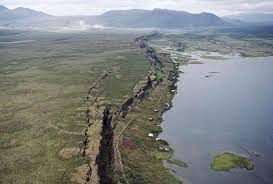
Why in News?
Many people lost their lives due to a dam bursting near a town in Kenya's Rift Valley following heavy rains and floods.
About Great Rift Valley
- Description: The Great Rift Valley is one of the most extensive rifts on Earth's surface, located in East Africa as part of the East African Rift System (EARS).
- Extent: It stretches from Jordan in southwestern Asia to the coast of the Indian Ocean in central Mozambique, passing through several countries.
- Geological Significance: The valley formed around 40 million years ago at a point where three tectonic plates converge, leading to the creation of the East African Rift.
- Geological Features: The region is geologically active, characterized by volcanoes, hot springs, geysers, and frequent seismic activity.
- Lakes and Mountains: The Rift Valley is home to about thirty lakes, including the Great Lakes of Africa like Lake Tanganyika and Lake Victoria. Notably, it hosts some of Africa's highest peaks such as Mount Kilimanjaro and Mount Kenya.
What is a Rift Valley?
- Definition: A rift valley is a lowland area that forms when Earth's tectonic plates move apart, creating a rift. These valleys can be terrestrial or underwater, resulting from seafloor spreading.
- Distinguishing Features: Rift valleys differ from river valleys and glacial valleys as they are a product of tectonic movements rather than erosion processes.
GS-II
Joe Biden's Controversial Statement and Papua New Guinea
Subject: International Relations
Source: CNN
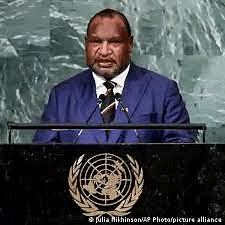
Why in News?
Joe Biden faced criticism from Papua New Guinea PM James Marape for his remarks implying his uncle was eaten by cannibals in New Guinea during WWII.
Background on Cannibalism in Papua New Guinea
- In Papua New Guinea, efforts have been made to move away from the stereotype of cannibalism, rooted in historical European perceptions.
Key Insights on Cannibalism Practices
- The Korowai tribe, known for their treehouses and alleged cannibalism, have been stereotyped as "primitive" by Western standards.
- While some anthropologists suggest cannibalism has ceased, the Korowai's reputation as cannibals persists despite their own disassociation from the label.
- The Fore people of Papua New Guinea engaged in cannibalistic practices as part of mortuary rituals, viewing it as an act of love and respect towards the deceased.
- The Fore discontinued cannibalism in the 1960s due to the spread of kuru, a fatal disease linked to consuming human flesh.
Historical Context and European Colonialism
- Historically, the portrayal of indigenous people as cannibals served as a pretext for European colonial atrocities, not reflecting the reality of these societies.
Papua New Guinea: Geographical and Cultural Context
- Papua New Guinea is an Oceanian country comprising the eastern part of New Guinea and surrounding islands in Melanesia.
Geographical Features
- The country shares borders with Indonesia and is situated near Australia and the Solomon Islands.
- Port Moresby serves as the capital, located along the southeastern coast.
- Papua New Guinea is the world's third-largest island country, covering an area of 462,840 km2.
NATIONAL CENTRE FOR GOOD GOVERNANCE (NCGG)
Subject: Polity and GovernanceSource: PIB
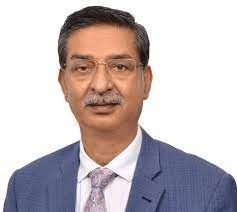
Why in News?
A delegation from India visited Bangladesh for bilateral discussions on renewing the Memorandum of Understanding (MoU) between India's National Centre for Good Governance (NCGG) and Bangladesh's Ministry of Public Administration.
Background:
- The primary agenda of the visit is to negotiate the renewal of the MoU for the period 2024-2029, focusing on mid-career capacity-building programs for Bangladesh Civil Servants.
National CENTRE FOR GOOD GOVERNANCE (NCGG):
- The National Centre for Good Governance (NCGG) is an autonomous institute under the aegis of the Department of Administrative Reforms and Public Grievances, Government of India.
- Its mission is to facilitate governance reforms through studies, training, knowledge sharing, and the promotion of innovative ideas.
Purpose and Functions:
- The NCGG focuses on public policy, governance, and reforms.
- It conducts policy-relevant research and prepares case studies.
- The centre curates training courses for civil servants from India and other developing countries.
- It collaborates with the Ministry of External Affairs (MEA) to provide training to civil servants from various nations.
- The NCGG aims to enhance the capacity of civil servants in India and other developing countries.
Start-up Ecosystem in India
Subject: Polity and Governance
Source: Indian Express

Why in News?
Recently, Prime Minister Narendra Modi announced that India has become the world's third-largest startup ecosystem, with over 1.25 lakh startups and 110 unicorns.
- Background: The Department Related Parliamentary Standing Committee on Commerce presented the 182nd report titled 'Ecosystem of Startups to Benefit India' last year, offering valuable insights.
Start-up Definition and Characteristics
- A start-up in India is an organization headquartered in the country, established within the last decade, with an annual turnover below ₹100 crore.
- Characterized by innovative ideas, products, or services, start-ups often rely on various funding sources like personal savings, crowdfunding, angel investors, and venture capital.
- They typically secure funding through bootstrapping, venture capital, or alternative methods.
Significance and Impact of Start-ups
- Around 47% of recognized start-ups are from Tier 2 and 3 cities, offering employment opportunities to the youth.
- Approximately 47% of recognized start-ups in India have at least one-woman director.
- Start-ups drive innovation, such as Deep Tech Start-ups, and expand services to remote regions, like Fintech start-ups reaching rural areas.
- They attract foreign investments from multinational corporations, contributing to economic growth.
Challenges in the Start-up Ecosystem of India
- Only 5.18% of recognized startups operate in the agriculture sector.
- Just 11% of patent applications from start-ups have been granted patents.
- Issues like lack of specific testing standards for hardware product-focused start-ups and delayed availability of funding from investors post-proof of concept exist.
- Only a minimal 1% of recognized start-ups have received the Certificate of Eligibility under Section 80-IAC of the Income Tax Act, 1961, allowing a 100% tax exemption for three profitable years.
Recommendations of the Committee
- Encouragement of advanced technologies like IoT and data analytics in agriculture for enhanced productivity and decision-making.
- Creation of funds focused on women entrepreneurs to ensure consistent access to capital.
- Relaxation in regulatory frameworks for direct overseas listing of Indian start-ups and taxation amendments concerning ESOPs.
- Establishment of dynamic testing and certification standards aligning with global best practices.
- Closing the talent gap through industry-educational institution collaborations for tailored courses.
- Promotion of partnerships between start-ups and research institutions for joint innovation and R&D endeavors.
GS-III
 |
Download the notes
UPSC Daily Current Affairs- 30th April 2024
|
Download as PDF |
Inflation Expectations Survey of Households' and 'Consumer Confidence Survey'
Subject: Economy
Source: PTI News
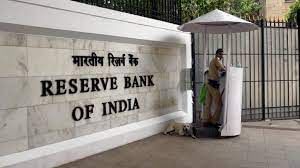
Why in News?
The Reserve Bank of India (RBI) recently introduced the 'Inflation Expectations Survey of Households' and 'Consumer Confidence Survey'.
About 'Inflation Expectations Survey of Households' and 'Consumer Confidence Survey':
- These surveys are initiated by the Reserve Bank of India (RBI) to offer valuable insights for the bi-monthly monetary policy decisions.
Inflation Expectations Survey of Households:
- This survey aims to capture individuals' subjective evaluations of price movements and inflation, based on their unique consumption patterns.
- It covers 19 cities, including Guwahati, Hyderabad, Jaipur, Kolkata, Lucknow, and Thiruvananthapuram.
- It solicits qualitative feedback from households on anticipated price changes in the upcoming three months and one year.
- Furthermore, it will gather quantitative data on current, three-month ahead, and one-year ahead inflation rates.
Consumer Confidence Survey:
- This survey is designed to gather qualitative responses from households concerning their perceptions of the overall economic situation, employment landscape, price levels, household income, and spending habits.
- It will also be conducted in 19 cities, including Ahmedabad, Bengaluru, Bhopal, Bhubaneswar, Chandigarh, Chennai, and Delhi.
GREEN TAXONOMY
Subject: Environment and EcologySource: The Hindu
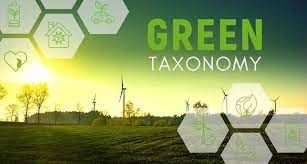
Why in News?
The RBI and the Finance Ministry could take inspiration from the developing world, especially the ASEAN region, where a layered green taxonomy as a living document keeps getting updated with sectoral views of possible sustainable trajectories.
Background
This taxonomy continually evolves, incorporating sector-specific perspectives on potential sustainable pathways.
Green Taxonomy
- A green taxonomy acts as a framework for defining environmentally sustainable investments.
- It categorizes economic activities and assets based on their environmental impact, helping to distinguish which activities are "green" or environmentally sustainable.
Purpose and Benefits
- Preventing Greenwashing: Taxonomies are crucial in preventing greenwashing, which involves misleadingly promoting false impressions about a company's eco-friendly products or practices.
- Informed Investment Decisions: By offering clear criteria, taxonomies help investors make informed decisions by recognizing truly sustainable opportunities.
- Channelling Investments: They direct investments towards sustainable economic activities and assets.
Structural Aspects
- Environmental Objectives: Most taxonomies encompass objectives related to climate mitigation and adaptation, and some also consider other environmental goals such as biodiversity conservation.
- "Do No Significant Harm" Criteria: Activities identified as green must not negatively impact other environmental objectives.
- Social Safeguards: Compliance with human rights is frequently included in taxonomies to ensure social responsibility.
Global Treaty on Plastic Waste
Subject: Environment and Ecology
Source: Indian Express

Why in News?
Thousands of negotiators from 175 countries are in Ottawa, Canada, to discuss the first global treaty to reduce plastic pollution.
- Discussions started on April 23 and are set to continue till April 29, with the final round planned for November in South Korea.
Background
- Plastic waste is pervasive, found from Mount Everest to the Pacific Ocean, impacting ecosystems and human health.
- An urgent global treaty is needed to address plastic's role in climate change, biodiversity loss, and pollution.
Key Takeaways
- Plastic production has surged since the 1950s, with over 450 million tonnes produced in 2019.
- Current recycling rates are low, resulting in nearly 6 billion tonnes of plastic waste polluting the planet.
- Plastic waste breaks down into harmful microplastics, impacting ecosystems and organisms.
- Plastic production contributes significantly to greenhouse gas emissions, exacerbating climate change.
What can the treaty entail?
- The treaty could surpass the 2015 Paris Agreement in environmental significance.
- Possible measures include capping plastic production, setting recycling targets, and regulating chemical additives.
- Guidelines may address assisting developing nations in meeting reduction goals and supporting workers in the plastic industry.
Roadblocks to the treaty
- Oil and gas-producing countries aim to limit the treaty's scope to focus solely on waste and recycling.
- Negotiations have faced challenges, with some nations opposing production caps and employing delaying tactics.
- The "High-Ambition Coalition" advocates for ambitious goals, while the US suggests voluntary measures to combat plastic pollution.
|
39 videos|4566 docs|979 tests
|
FAQs on UPSC Daily Current Affairs- 30th April 2024 - Current Affairs & Hindu Analysis: Daily, Weekly & Monthly
| 1. What is the significance of the Taam Ja' Blue Hole in the Great Rift Valley? |  |
| 2. What controversy surrounded Joe Biden's statement regarding Papua New Guinea? |  |
| 3. What is the role of the National Centre for Good Governance (NCGG) in India? |  |
| 4. How does the Green Taxonomy impact environmental policies and regulations? |  |
| 5. Why is a Global Treaty on Plastic Waste important for addressing the plastic pollution crisis? |  |

































